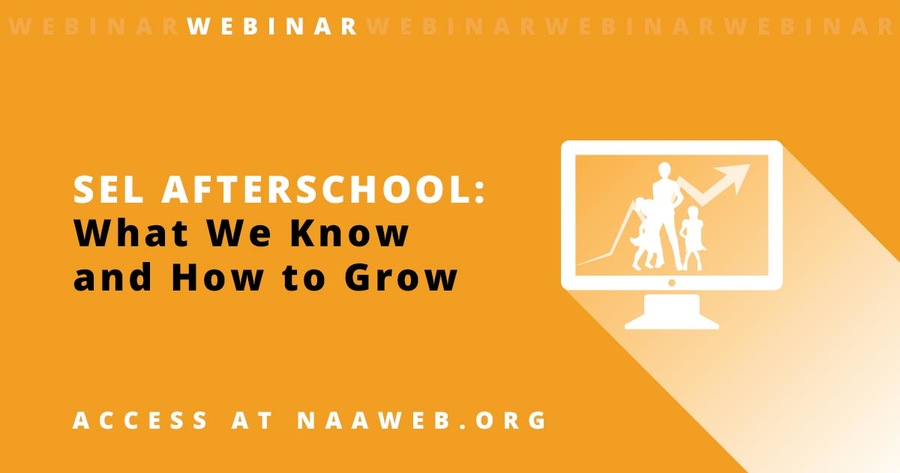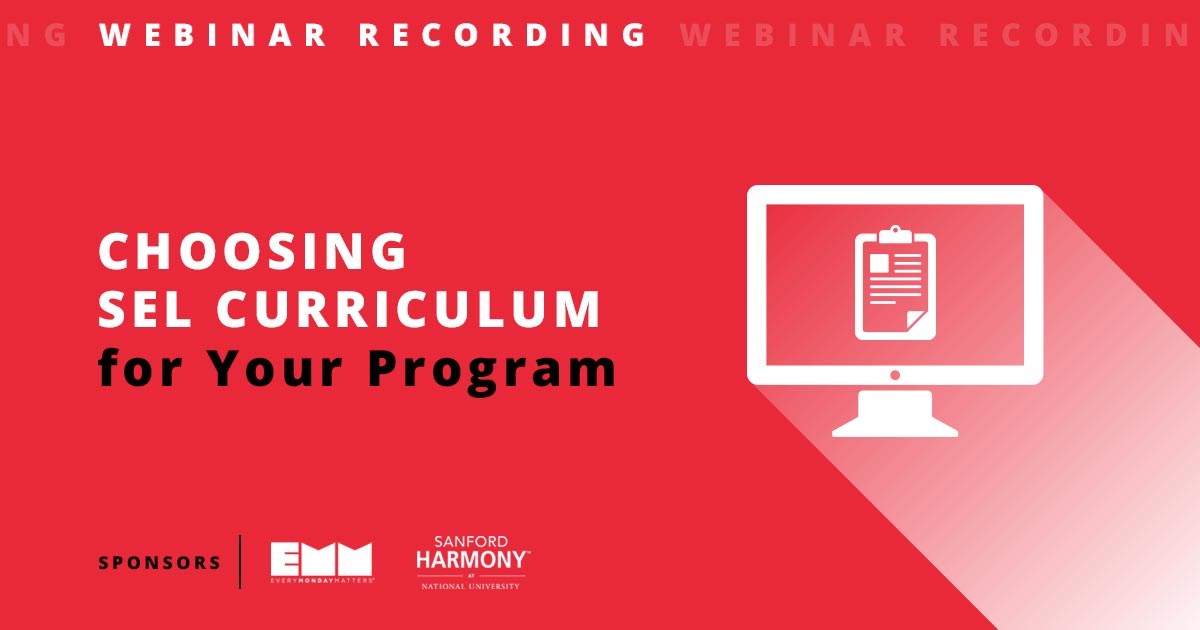Whether it's the National Commission on Social, Emotional, and Academic Development's report From a Nation at Risk to a Nation at Hope or research by Stephanie Jones and colleagues on Navigating SEL from the Inside Out, where do you begin?
What do you need to know and how do you use it in your programs?
In SEL Afterschool: What We Know and How to Grow, Jennifer Brady, Chief Executive Officer, Development Without Limits, and Jessy Newman, American Institutes for Research (AIR), shared more about NAA's SEL to the Core report and key takeaways from many social and emotional learning reports and how other afterschool leaders are supporting SEL in their programs.
Many joining the webinar, according to a poll, know SEL is important but are only beginning to explore integrating it into their programs, along with many others who engage in SEL but have room to grow.
"It's really exciting to see so many people who are excited to talk about SEL," said Newman, whose work focuses mainly on youth development and SEL in supportive learning environments. "I'm inspired by the fact that most people seem to be doing something in support of social and emotional learning."
Newman touched on the importance of efforts focused on defining SEL, articulating a set of competencies, and looking at SEL assessment—which can be helpful in understanding how young people fare from these efforts and how to better support their development.
With SEL such a hot topic, a variety of frameworks—136, to be exact—and definitions of SEL could be found. Identifying, Defining, and Measuring Social and Emotional Competencies (Berg, et al., 2017) indicated that throughout the field, different terms are used for competencies with similar definitions and the same terms are used for competencies with different definitions.
Newman shares six specific initiatives and studies that could be helpful for afterschool professionals:
- Taxonomy Project (2015 – 2020, EASEL Lab)
- Establishing Practical Social-Emotional Competence Assessments of Preschool to High School Students (2016 – 2019, CASEL)
- A Repository of Interpersonal, Intrapersonal, and Higher Order Cognitive Competencies (2015 – 2018, RAND)
- National Commission on Social, Emotional, and Academic Development (2016 – 2019, Aspen Institute)
- Science of Learning and Development (SoLD) Project (2016 – 2018, multiple partners)
- The Organisation for Economic Co-operation and Development Study of Children's Social and Emotional Skills in Cities (2017 – 2020, OECD)
"We often are very quick to jump to the competencies, which are important, but I find that in doing so we sometimes lose sight of the fact that this is a process and that what we really need to do is be intentional about how we support competence development—or, on the flip side, what doesn't support it," said Newman, who used group work as a situational example of a process and practice leading to specific competencies.
According to Navigating SEL from the Inside Out, there are key features of effective SEL programs as well as program components that support this.
Key Features of Effective SEL Programs
- Occur within supportive contexts.
- Build adult competencies.
- Acknowledge features of the broader community context.
- Target key behaviors and skills across multiple contexts.
- Set reasonable goals.
- Incorporate "SAFE" elements.
Supportive Program Components
- Activities beyond core lessons.
- Climate and culture supports.
- Applications to OST.
- Adaptability to local context.
- Professional development and training.
- Support for implementations.
- Tools to assess implementations and program outcomes.
- Family and community engagement.
These features and components came together to form a pyramid of eight essential practices, outlined in NAA's SEL to the Core, organized to specify which are more foundational and which are programmatic.
"I think this is important to call out, because sometimes we jump right to the top when we're talking about SEL without completely thinking through the organizational supports on the bottom that would foster really intentional SEL practice with young people," said Newman. "SEL to the Core highlights strategies and resources you can use to work on each of these eight practices."
Regarding key takeaways and guidance for supporting SEL in afterschool, Newman highlights three main items:
- Intentionality and planning are key. Alignment is essential, words matter and planning is critical.
- Youth development is foundational to SEL. Good SEL is grounded in good youth development, but that alone is not enough to support SEL development.
- SEL for kids starts with the adults. Adults need to develop their own social and emotional competencies to engage in healthy SEL.
Newman also touches on readiness and how a program would know if it's ready to take on SEL initiatives.
To access the entire recording, visit SEL for Kids Starts with the Adults.



